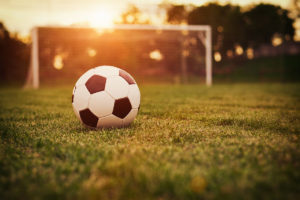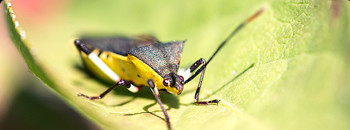In the coming weeks, soccer players will take to the field for the spring season – full of hope for a winning season and grass stains to prove it. Soccer is a sport with pounding contact between player and turf. This makes natural turf playing fields the key to keeping players healthy and giving them a chance to perform at their best.

For me, grass stains are hard-earned recognition that I left everything on the field. (Thankfully, I’ve learned how to leave them in the wash, too.) Real grass is essential to optimal play whether you are a beginner on the field or a world champion. Playing surfaces matter with my vote always going for natural turf. The fast-paced play and sound of the ball swishing in the upper right 90 on natural turf makes the game-winning goal that much sweeter.
During many seasons as a professional and through my partnership with RISE (Responsible Industry for a Sound Environment) ®, I have come to admire the people behind maintaining a healthy natural turf field.
A lot of technology and expertise goes into the meticulous upkeep professionals expect and the playable upkeep at your local park or league field. Natural turf playing fields require knowledge and time from groundskeepers, sports turf managers, and maintenance crews, and the result of their care and attention to detail is reliable, playable and safe turf. These professionals put in a lot of hard work that shouldn’t go unnoticed, so here’s a closer look at how natural turf fields are kept in game-ready shape for soccer players of all levels:
- Implement a game plan. An integrated pest management (IPM) approach is important to identify, monitor, and control weeds, insects, and diseases that harm grass. Proper treatment keeps weeds and insects like grubs at bay, protecting the quality of the field, and the health and safety of athletes.
- Fields need nutrients, just like athletes. Grass needs certain nutrients and proper fertilization to grow and stay healthy. IPM practitioners treat grass using products formulated for various regions to keep it in game-time shape – just like the athletes ready to take the field.
- Pre-game health check. Each field has its own needs, which can vary with region, soil type, weather patterns, field use, and more. That means each field has its own specific pest and plant health challenges. Professional groundskeepers and sports turf managers use pesticide and fertilizer products to help keep playing surfaces healthy and in top-shape.
- Outlast the clock. I’ve learned that natural turf fields can be used for more than 20 years without being replaced given the right attention and maintenance, much longer than the 90-minute clock and any game concessions.
Natural turf helps athletes play hard and play safe. It provides optimal cushioning for running and falls and is the ideal playing surface for all field sports athletes. A well-maintained natural turf field can also mean the difference between a PK scored or missed wide and clean contact with the ball or with another player.
For me, it’s natural turf or bust.
This is a guest post written by Abby Wambach, former captain and forward for the United States Women’s National Soccer Team (USWNT), 2015 World Cup Champions. Thoughts in this post represent Abby Wambach, and not the USWNT.

